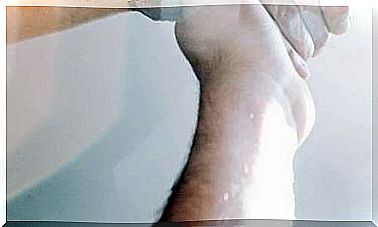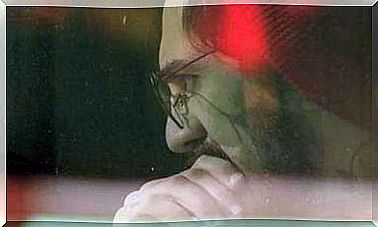Regain Your Balance With The Rebalancing Method
Combine manual techniques with presence and emotional work to alleviate specific discomforts and restore balance on a physical, mental and spiritual level.

The body has the ability to adapt to extreme situations, be they physical or emotional, but it is also true that there comes a time when it is unable to react and muscle tension, stiffness, pain in the back, hips or feet and even chronic fatigue appear.
Rebalancing, a deep method of body work that combines different techniques, can restore balance between all levels (physical, emotional and mental) if applied with sensitivity. As a consequence, well-being is restored.
The keys to the rebalancing method
Poor postural habits, competitive sports, sedentary life or emotional tensions are at the origin of the discomfort that we can suffer.
A continuous situation of anxiety, feelings of repression or frustration at work acts in a negative way on the physical plane.
To this relationship between body and mind are added emotional and spiritual factors. In the field of psycho-neuro-endocrine-immunology, the connections between negative psychological states and immune responses have been discovered.
The organism reflects all these mental and emotional states in characteristic muscular patterns and postures. Even physical and emotional traumas from the past get trapped as blockages in our tissues, which we call “energy knots.”
If we add to that the accelerated pace of life that we lead, an imbalance occurs in the nervous system.
In Rebalancing, various manual techniques are combined with work on emotions and the attitude of the therapist is also of special importance. This seeks a comprehensive balance of the body, emotions and mind, which improves all kinds of alterations and helps prevent them.
Where does rebalancing come from?
Rebalancing has its origins in the Osho ashram (Bhagwan Shree Rajneesh, 1931-1990), in the city of Pune, in the 80s of the last century, when the work of a group of manual therapists and practitioners of disciplines such as the Rolfing, Postural Integration, the Trager method and psychotherapies.
The new methodology united the precise knowledge of the corporal techniques with the emotional work and the importance given to the “presence” and conscience of the therapist. In this sense, meditative practice is also incorporated into self-care.
Among the rebalancing techniques we can find relaxing massages, deep muscle massages, stretching, maneuvers to release the joints or postural integration techniques. You can also include meditations to practice at home, such as this meditation to sleep well.
What are the health benefits?
The application of these techniques translate into concrete benefits in terms of physical, mental and emotional well-being:
- It relieves specific ailments, such as persistent pain in the joints or pain in the back and neck, and also supports general well-being.
- Achieves greater elasticity of muscles and tissues.
- Activates the venous-lymphatic circulation.
- Combat physical and emotional tension, which is useful against exhaustion and insomnia.
- It helps the body to take a correct posture.
- It promotes the elimination of toxins and the supply of oxygen.
- Relaxes the parasympathetic nervous system, which helps to normalize the rhythm of activity and rest.
- It enhances positive mental states and is appropriate for anyone who wants to find the feeling of well-being and deep tranquility.
A gentle therapy
An affectionate attitude from the therapist, who takes care of his state of consciousness, is part of the treatment. For this reason, it is essential that the therapist is interested in the individual history of the client, his needs and the challenges of his daily life. In addition, he reads and interprets the person’s body with his hands to find out how unbalanced he is.
From there, he applies a deep massage, stretching, joint release techniques, “rocking”, postural and myofascial integration, and what in Rebalancing is known as “somatoemotional unscrewing”, aimed at releasing residual tension and trauma.
Although it affects the deep tissues of the affected area or that present some symptoms, the therapist takes into consideration the set of body structures, as they are interdependent.
In general, to achieve good results, it is advisable to carry out a total of 10 sessions, distributed weekly or every 15 days depending on the case.
The sessions can also be done sporadically, because the effects are immediate.
A real case: release from emotional pain
A real example will help you understand how rebalancing works and what can be achieved.
Ana had been feeling pain in her lower back and cervical for a long time. These pains were aggravated after an accident, with a blockage and pain in the right shoulder. Ana sought complementary therapy to find relief.
In Ana’s case, the “body reading” revealed an alteration in the suboccipital region with an “energy knot” in the right shoulder and a compression in the lumbosacral area.
Ana appreciated improvement from the first sessions, both in the lumbar area and in the persistent shoulder pain. He even gained energy and well-being on a mental and emotional level.
After applying some Rebalancing techniques in three weekly sessions, the “unscrewing” technique served to free the shoulder.
To do this type of release, without the patient doing anything, the therapist follows the inherent movement of the shoulder until the body memory indicates the position in which the trauma occurred. The energy encapsulated in that painful knot needs to be released along the same path that it entered.
In the correct position, and giving the body time, we feel that a neuromuscular release pulse is restored . In this case, the patient relived the negative emotions of the accident and released both physical and emotional tension.
In the following sessions the therapist worked the lumbar region and released the lumbosacral joint. This had a positive impact on the suboccipital area through which important cranial nerves pass, including the vagus and spinal nerves, which affect digestive function and cervical muscles.
Ana’s pains disappeared and to preserve her good condition she decided to receive monthly sessions. He also practiced a simple exercise table daily at home.









